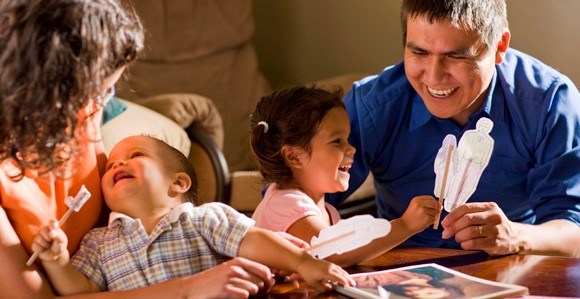 Küçük yaşta dil eğitimi söz konusu olunca ebeveynlerden genellikle ikinci bir dili öğretmenin en uygun yaşı nedir sorusu gelir ki, biz eğitimciler bunun anne karnında bile başlayabileceğini söyler ve ne kadar erken o kadar iyi olduğunun altını çizeriz. Bunun üzerine hemen şu sorular gelir: Peki biz şu dili öğretirken onun anadilde geri kalmasına sebep olmaz mıyız? Kafası karışmaz mı? Peki ya herkesten geç konuşursa?
Küçük yaşta dil eğitimi söz konusu olunca ebeveynlerden genellikle ikinci bir dili öğretmenin en uygun yaşı nedir sorusu gelir ki, biz eğitimciler bunun anne karnında bile başlayabileceğini söyler ve ne kadar erken o kadar iyi olduğunun altını çizeriz. Bunun üzerine hemen şu sorular gelir: Peki biz şu dili öğretirken onun anadilde geri kalmasına sebep olmaz mıyız? Kafası karışmaz mı? Peki ya herkesten geç konuşursa?
Bu tip endişeler kulaktan dolma bilgilerden kaynaklanır ve zamanla birer mit haline dönüşmüşlerdir.
Okumaya devam et “Efsane Avcılığı: İki Dilli Çocuk Yetiştirmek”

 Birçok ebeveyn evde çocuklarına İngilizce öğretmek istiyor, ama nasıl ve nereden başlayacağını bilmiyor. İngilizceniz mükemmel olmayabilir, bu önemli değil. En önemli şey hevesli olmanız ve çocuklarınıza cesaret verip, onları motive etmeniz aslında. Çocuğunuz sizin istekliliğinizi ve coşkunuzu örnek alacaktır. Çocuğunuz hemen İngilizce konuşan başlamazsa endişelenmeyin. Bir dili özümsemek için belirli bir miktarda zaman gerekir. Sabırlı olun, çocuğunuz ‘kendi zamanında’ İngilizce konuşmaya başlayacak.
Birçok ebeveyn evde çocuklarına İngilizce öğretmek istiyor, ama nasıl ve nereden başlayacağını bilmiyor. İngilizceniz mükemmel olmayabilir, bu önemli değil. En önemli şey hevesli olmanız ve çocuklarınıza cesaret verip, onları motive etmeniz aslında. Çocuğunuz sizin istekliliğinizi ve coşkunuzu örnek alacaktır. Çocuğunuz hemen İngilizce konuşan başlamazsa endişelenmeyin. Bir dili özümsemek için belirli bir miktarda zaman gerekir. Sabırlı olun, çocuğunuz ‘kendi zamanında’ İngilizce konuşmaya başlayacak.
 accompany a picture in a playful way. For example, “A is for apple” (Dryden & Rose, 1995; Dryden & Vos, 1997).
accompany a picture in a playful way. For example, “A is for apple” (Dryden & Rose, 1995; Dryden & Vos, 1997). Learn with lots of movement—use the body and the mind together. The brain and the body are one. However, the traditional education system encourages students to sit all day long. Now we know that we learn more when we move as we learn. Encourage children to dance and move to the rhythm when learning a second or third language (Gardner, 1983; Doman, 1984; Dryden & Vos, 1997).
Learn with lots of movement—use the body and the mind together. The brain and the body are one. However, the traditional education system encourages students to sit all day long. Now we know that we learn more when we move as we learn. Encourage children to dance and move to the rhythm when learning a second or third language (Gardner, 1983; Doman, 1984; Dryden & Vos, 1997).